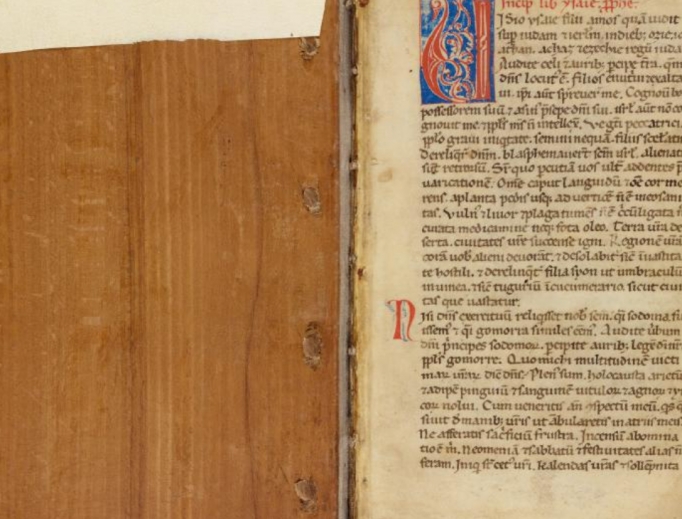Bible Basics: Tangible History of the Good Book Comes to Life in Washington Museum
Looking for a museum to visit this summer? Check out the Museum of the Bible.

Anyone who visits Washington, D.C., expects to hit the museums. The National Air and Space Museum, the National Gallery of Art and the Smithsonian National Museum of Natural History are considered required viewing in our nation’s capital. The Museum of the Bible is a relative newcomer to the scene, having opened in 2017. When I visited in April, Jeffrey Kloha, the museum’s chief curatorial officer, joked, “Everyone thinks ‘museum’ equals boring, and ‘Bible,’ likewise, equals boring, so the Museum of the Bible must be boring squared.”
The Museum of the Bible is many things, but boring is not one of them. The mission of the museum is to invite all people to engage with the Bible, so that, in seeing the exhibits, whether one has faith or no faith, one recognizes the impact of the Good Book, most especially on Western culture, and America specifically.
At the entrance are the two massive “Gutenberg Gates.” Nearly 40 feet high and comprised of 118-plus brass panels, the two reliefs feel like massive doors opening and contain the first 80 lines of Genesis as would have been seen by someone using the famed printing press after which the gates were named. The gates alone give the visitor a hint of what is to come, an immersion in the history of not merely the Bible, but of the testimony of the faithful across faiths, across centuries.
There’s a lot to see, hear and be awed by, as 3,000 years of faith history is an intense journey for any museum to take on. It also allows for the inclusion of modern testimony, like the Wiedmann Bible, treasures from the Vatican, and one room where visitors can record videos of themselves expressing what the Bible means to them. The walls of that particular exhibit are lined with screens displaying prayers and petitions from people all over the world, and it’s a moving testimony to the universal thirst in the human heart for God. It will be preserved so that even one’s children’s children can come to the Joshua Room, type in a name and find a loved one’s faith-filled testimony.
The sheer volume of artifacts, manuscripts, books and art, coupled with the seamless integration of high technology, has led to the theory that, if you wanted to see everything in the museum, it would take more than nine eight-hour days! Yet it isn’t overstimulating. Everything in the Museum of the Bible is designed to reveal scholarship, thought and purpose. I especially enjoyed the virtual-reality tour of the Holy Land, as it gave me a physical way to take in some of the sights I might never see in person.
I also loved the room dedicated to the Stations of the Cross and the alcove where a scholar sat printing out people’s names in Hebrew. There’s a library revealing all the languages into which the Bible has been translated and revealing all the languages which still wait for their equivalent of St. Jerome, an early doctor of the Church who provided the world with the first Latin — or “common” — version of the Bible (as opposed to the original Greek or Hebrew, in which the texts had been received throughout history). I found myself wanting to linger, rather than try to catch everything. Seeing the illuminated manuscripts with the hand-copied microscript revealed what we often forget: how much time and devotion people gave to the Scriptures in order to preserve them for future generations. These were just some of the treasures, but, everywhere, there was history, and there was evidence of centuries of people steeped in the faith.


Faith is always deepened by witness, and at the Museum of the Bible, in the stories of exhibits, interactive displays and virtual reality taking one through the holy history, a visitor both gets to be a witness and to see centuries of such witness to the faith.
St. Jerome once said: “Ignorance of Scripture is ignorance of Christ.”
Going to the Museum of the Bible is a good beginning to address that ignorance and to bolster one’s own connection to the Scriptures and the lands where they took place. It’s also a reminder of what does not separate all those who call themselves Jewish or Christian, whether Catholic or Protestant or evangelical, for although we may not agree on what the truly canonical works of the Bible are (Jews, of course, reject the New Testament and Protestants reject certain books of the Old Testament), we are all on the same page in one important way: We all hold a reverence for the word of God.
Sherry Antonetti writes from the Washington, D.C., area.
UPCOMING SHROUD OF TURIN EXHIBIT
If one needs any further reason to visit the Museum of the Bible, consider the upcoming planned exhibit about the Shroud of Turin, which the museum describes as “a groundbreaking, high-tech, innovative Shroud of Turin exhibition with a mission to explore its history, mysteries, facets and themes through state-of the-art, imaginative displays,” coming January 2021, pending funding. The shroud, like the Bible, is a means by which each of us, like the woman who reaches out to touch the hem of Jesus’ garment, can come into deeper contact with Christ.
The web link to the planned exhibit includes an invitation to be part of helping to fund the exhibit about the shroud. Learn more via MuseumoftheBible.org/shroud-of-turin.
Editor's Note: The shroud exhibit information was updated after posting.
- Keywords:
- bible
- catholic history
- christian history
- museum of the bible
- museums
- sherry antonetti
- travel
- vatican treasures

















